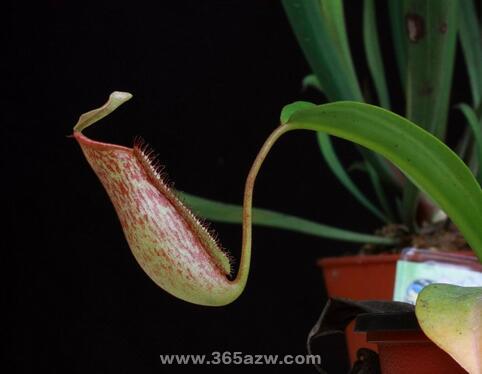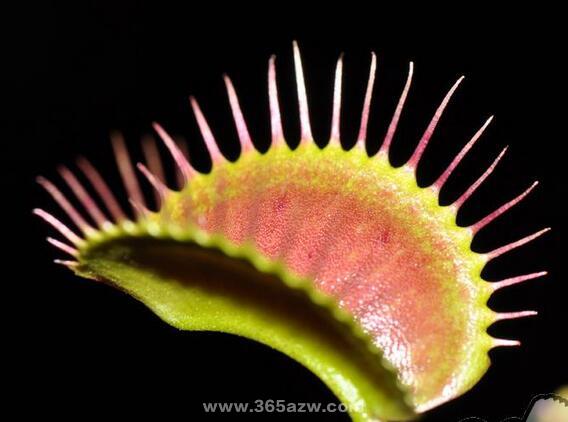Cordyceps cultivation method is Cordyceps poisonous
Cordyceps sinensis is a kind of plant that takes worms as food, and this kind of plant culture substrate is disinfected. What other problems do you need to pay attention to in culture? Next, I will introduce it to you in detail.

Cordyceps sinensis is a kind of plant with small white flowers, the color is white and flawless, and the edges of the petals are corrugated, which is very beautiful and attractive. its beautiful leaf cage is of high ornamental value, elegant and unique planted in hanging pots and full of interest.
The insectivorous herbivore has a strange insect trap at the front end of the leaves, which is up to 3 meters long. The trap consists of two shell-shaped leaves with many prominent hard thorns and fine nectaries, the inner surface is covered by crimson digestive glands, and there are three stout tentacles arranged in equilateral triangles. Attracted by the sweet fragrance of the flowers, the insect is willing to land on the leaf petal, so it falls into the cage. The more insects struggle, the more they can stimulate the secretion of digestive juices. Digestive juices contain high concentrations of enzymes, and within a few days the nutrients of insects are absorbed by insect traps.
Culture methods and points for attention of Cordyceps sinensis
Spray moisturizing:
After Cordyceps sinensis sowing, the substrate should always be kept moist. It can be sprayed with fine mist or immersed in water from the bottom of the plate. The water should be used after disinfection with strong chlorine or permethrin, and the relative humidity should be kept at about 90%.
Sunshade:
Cordyceps sinensis is afraid of strong light, so it is not suitable for strong light after sowing and seedling stage, so it is necessary to use sunshade net to protect the growth of Cordyceps sinensis.
Sowing method:

Because the seeds of Cordyceps sinensis are small and inconvenient to operate, it is best to fix the seeds on absorbent paper, one seed in a red circle, cut off the seeds together with absorbent paper before sowing, clamp the absorbent paper with sharp-nosed pliers, and place them on the surface of the substrate. The suitable sowing rate is 1ml / hole.
Overlay:
The seeds of Cordyceps sinensis have good light and need proper light to germinate better, so there is no need to cover after sowing.
Selection and preparation of matrix:
The cultivation substrate of Cordyceps sinensis should be loose, fertile and strong water-holding capacity, or the seedling substrate sold in the market can be used.
Matrix disinfection:
When sowing Cordyceps sinensis, the substrate should be disinfected to prevent the invasion of diseases and insect pests, the substrate should be dried and used, and the matrix should be soaked with disinfectant after sowing.
Temperature control:
The lowest temperature for Cordyceps sinensis sowing should be above 15 ℃, and the lowest temperature for overwintering in the growing period should be more than 10 ℃. The northern region should overwinter in the greenhouse to avoid freezing damage.

Seedling raising mode:
Cordyceps sinensis needs to be sown and raised seedlings in the seedling box or hole tray, which should be put into the greenhouse or small bow shed to increase the germination rate, but not in the open field.

The above is the introduction of Cordyceps sinensis breeding, I hope it will be helpful to you.
Related
- Wuhan Hospital Iron Tree Blooming Result Was Instantly Frightened by the Gardener Master
- Which variety of camellia is the most fragrant and best? Which one do you like best?
- What is the small blue coat, the breeding methods and matters needing attention of the succulent plant
- Dormancy time and maintenance management of succulent plants during dormancy
- Minas succulent how to raise, Minas succulent plant pictures
- What are the varieties of winter succulent plants
- How to raise succulent plants in twelve rolls? let's take a look at some experience of breeding twelve rolls.
- Attention should be paid to water control for succulent plants during dormant period (winter and summer)
- Watering experience of twelve rolls of succulent plants
- Techniques for fertilizing succulent plants. An article will let you know how to fertilize succulent plants.



